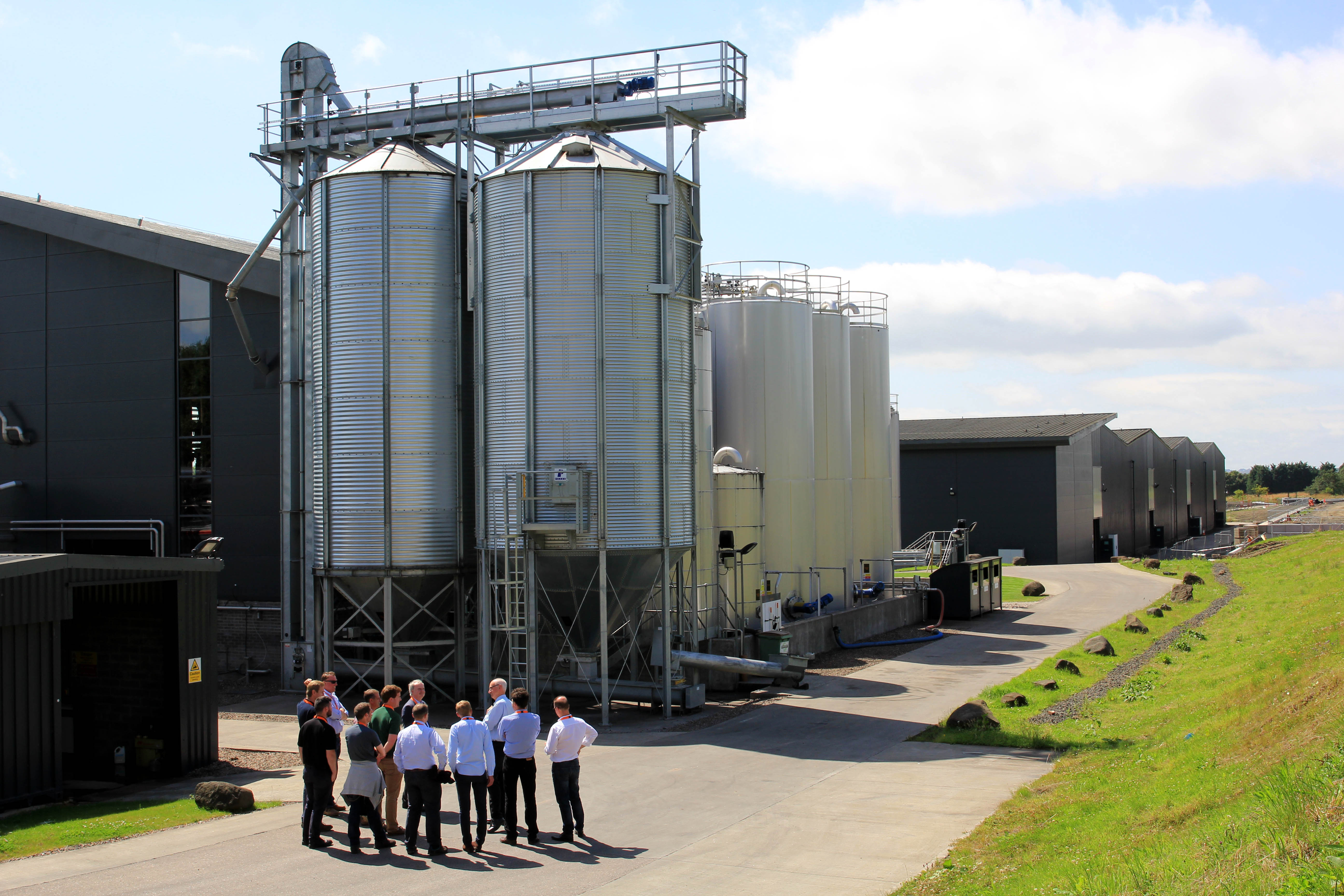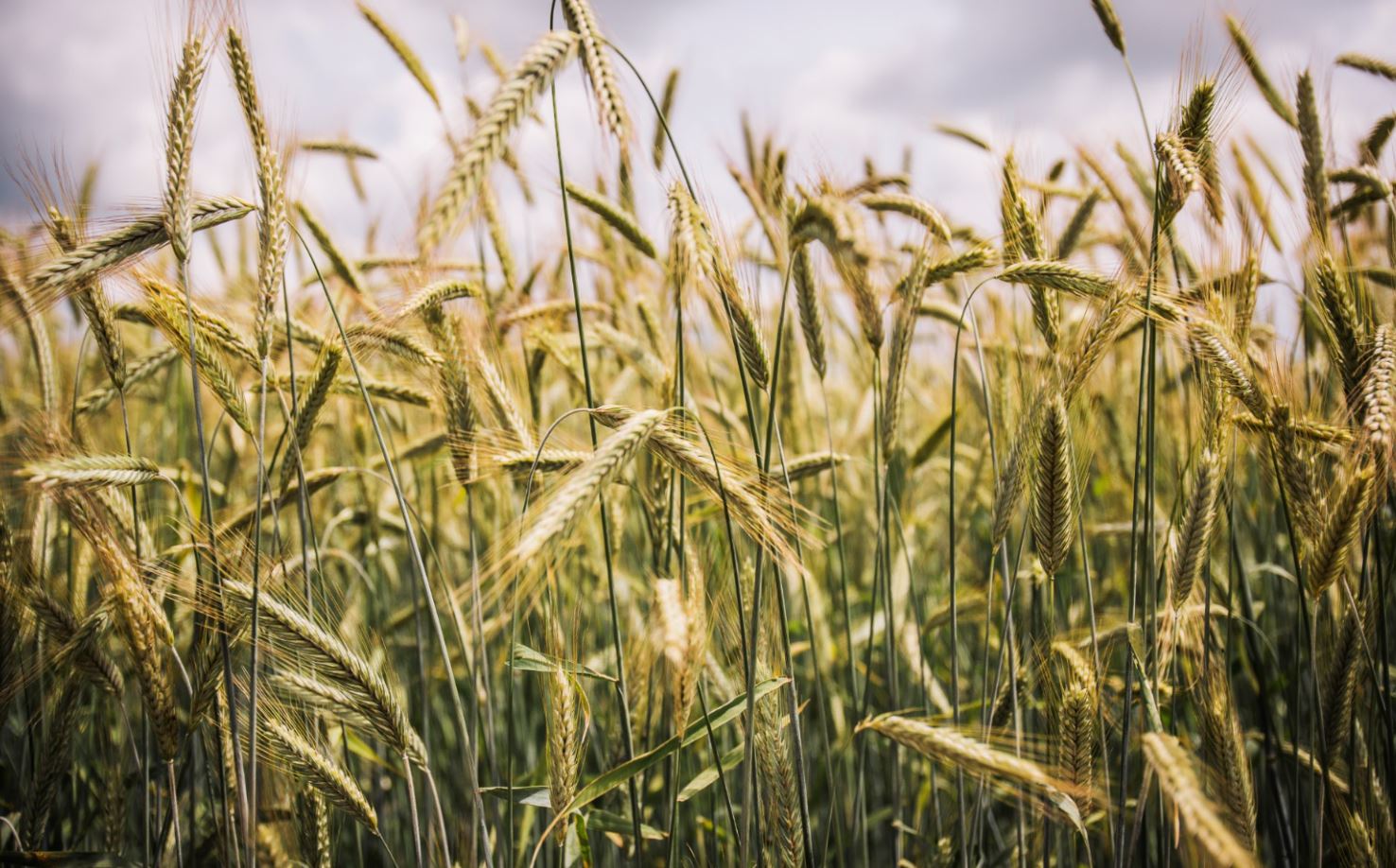Hybrid Rye for Distilling
12.3.2020
In search of flavour
Scotland's whisky industry has enjoyed steady growth for nearly two decades thanks to increasing global demand for aged whisky. During this period many existing distilleries have expanded, and nearly 30 new premises established. There are even producers in England seeking to gain a slice of the action with distilleries as far apart as Devon and the Lake District.
Much of the media attention given to the expansion of the industry has tended to focus on the premium brands or those smaller outfits backed by wealthy individuals. Many of the rest have gone on seemingly unnoticed.
One distillery that is hoping to ride this wave of interest, but without running head-on into the multinationals that otherwise dominate the industry, is the John Fergus & Co-owned InchDairnie Distillery in Fife. Built in 2014 on the edge of a Glenrothes industrial estate at a cost of £15 million, it may lack the nostalgia of some of its contemporaries but it is seeking to make up for this with a state-of-the-art plant and by forging a new brand in an underserved corner of the market.
“Our long-term success rests on carving out a niche in an otherwise crowded space,” explains Ian Palmer, managing director at InchDairnie Distillery.
With roughly 100 well-known brands in the home market and many more exported, building a following without a notable point of differentiation would take pockets far deeper than those available to Mr Palmer. Instead, he has identified a sector of the market which is established yet experiencing significant growth of its own and for which there are only a few established brands: rye whisky.
“Heritage is great if you have it and it certainly makes the marketing task a lot easier, but what we’re really interested in is flavour. Rye gives us an entirely different flavour profile and the market for it is growing,” he says.
Although rye whisky owes its origin to north-west Europe the market for it is North America. Between 2009 and 2018, sales of rye whisky in the US increased ten-fold.
“In certain markets, principally the US and Canada, rye is already recognised as a unique product. This means the market is established and the consumer understands the point of difference with whisky from other grains. Whisky made using a large proportion of rye from Scotland is a niche opportunity we are seeking to exploit,” says Mr Palmer.
What InchDairnie lacks in heritage it makes up for in provenance. Its whisky, Ryelaw, the brand it successfully trademarked in 2017, takes its name from a near-by farm of the same name and the grain is also grown in Fife.
“The name may be a fortuitous fit, but it underlines our ambition. We are seeking to build a sustainable supply chain based around a whisky which owes its identity to a grain grown, matured and distilled in Fife.”
While the backstory may be strong, regulations mean that only whisky distilled from barley malt can be marketed as ‘malt whisky’. Everything else is described as ‘grain whisky’. Fortunately, meeting the definition of a grain whisky in Scotland and a rye whisky in the US is reasonably straight-forward.
“As long as it is more than 51% rye, distilled at no more than 80% alcohol, and matured in new oak charred casks at no more than 62.5% alcohol, it will fulfil the terms of the US regulations. This is not too different from Scottish regulations, so we can comply with both,” explains Mr Palmer.
Eyes on the prize
The prospect of great rewards may have been the stimulus that captured the attention of John Fergus & Co but creating the product that would one day deliver the business plan was not without its challenges. Even for Mr Palmer whose entire working carrier has been spent in the whisky industry, distilling whisky from rye was a new learning curve.
“We did our homework in the US where we were warned that rye produces high concentrations of beta glutens, has a high viscosity and can be difficult to filter. The latter point being significant in our decision to purchase a hammer mill rather than the more popular roll mill along with the mash filter as opposed to the usual Lauter tun. Our biggest concern, however, was that rye would produce high levels of foam during the fermentation process.
“We were prepared for this but couldn’t make foam at all. It seems that by pure good fortune, we found that the amount of foam produced is dependent on the variety used. The high-foaming varieties used to make crisp breads simply don't suit distilling. We have now specified three varieties with our grower that suit our system,” says Mr Palmer.
Identifying which varieties suit distilling has been a case of trial and error, but aside from foam there is precious little to separate varieties, much to the frustration of Mr Palmer.
“It is my opinion that the current view of cereal development is two dimensional: agronomic yield because this is what the grower needs to maintain profitability; and alcohol yield because this is what the distiller needs. This is a production efficiency mindset and while it is fine for those wanting to make ethanol, as a whisky distillery this focus falls short of our needs because it overlooks the importance of flavour. We will pay more for a grain that produces a flavour we cannot get elsewhere.
“We need varieties that provide degrees of flavour and give the grower the return they need. Only by recognising that all parties in the supply chain have a vested interest in seeing this succeed can we expect to develop an integrated supply chain from seed to distillery that secures a long-term future for all parties,” he says.
Influencing performance: the role of varieties and agronomy
Most trials involving rye are either designed to benefit the grower by optimising inputs or the distiller by maximising alcohol yield. There is little done to establish if flavour profiles vary between varieties. To investigate this KWS worked with the Scotch Whisky Research Institute (SWRI) to establish the flavour differences of two non-foaming varieties, KWS Bono and KWS Edmondo, and to measure their distilling performance against the spring barley industry standard.
“The results largely reflect the breeding focus of the past few decades which is perhaps not surprising,” explains John Burgess, hybrid rye product manager at KWS UK.
“The focus has been on improving yield performance and agronomic characteristics. That both KWS Bono and KWS Edmondo exhibited similar flavour profiles is therefore to be expected. They also produced similar spirit yields although these were slightly less than that produced by malting barley. Again, this is to be expected as malting barley has benefitted from decades of breeding focus intent on improving these characteristics,” he adds.
The results nether enhance or diminish rye’s suitability for distilling, but instead confirm what many already know: it is a different grain that exhibits different properties.
“No one is looking at rye as a substitute for other grains. Its chief attribute is that it offers a different flavour profile. If this is something a distiller desires, they will adapt their processes to suit,” says Mr Burgess.
Trials investigating agronomy best practice, however, have been more productive. Scottish Agronomy has investigated the relationship between nitrogen and seed rates for the past four years. The results, says senior agronomist Eric Anderson, will be of interest to both growers and regulators.
“We have shown repeatedly that the optimum seed rate is 300 seeds/ square metre and the optimum nitrogen rate, including soil nitrogen supply, is 150 kg N/ha. In 2019 this delivered a yield of 11.35t/ha. What captures my interest, however, is that to produce the same yield with winter wheat requires an additional 75kg N/ha. As regulators attach greater significance to nitrogen use efficiency as an indicator of sustainability, I expect grower attitudes to rye to change dramatically,” says Mr Anderson.






